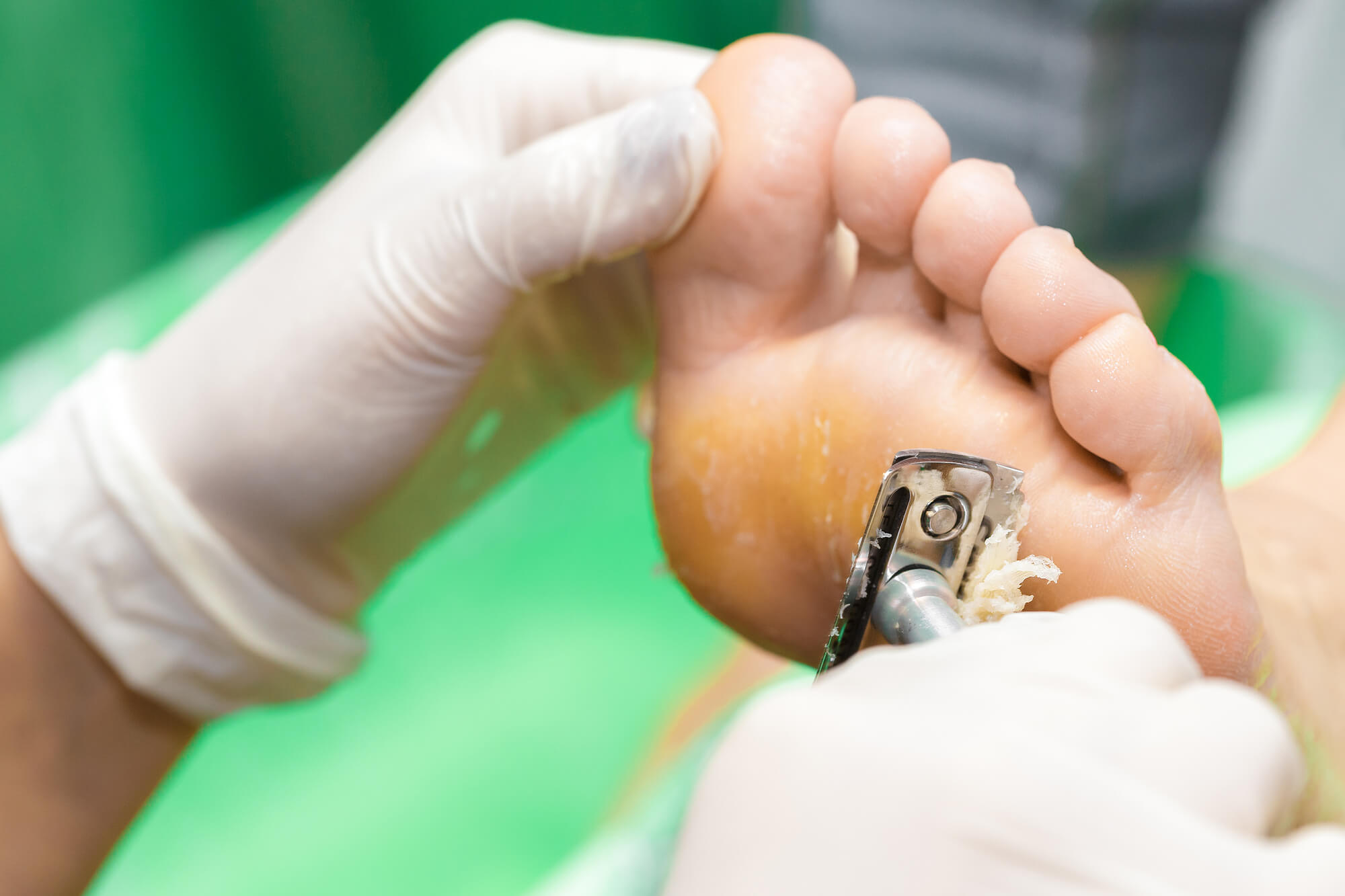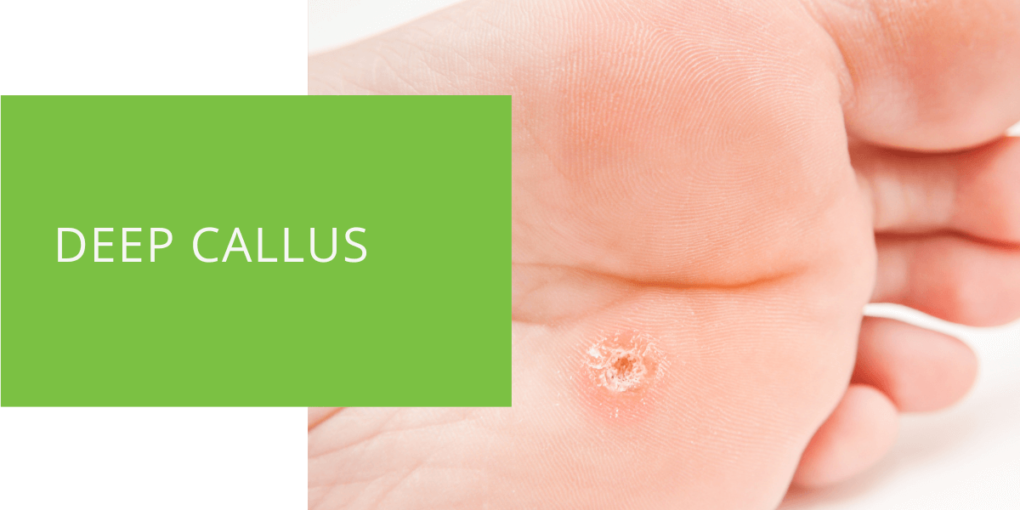Understanding Deep Callus: Symptoms, Causes, and Treatment
Taking care of your feet is crucial to maintain a healthy lifestyle. After all, your feet are the foundation of your body and take you everywhere you need to go. However, foot problems such as calluses and corns can often develop, causing discomfort and pain. These issues can be severe, especially if you're on your feet for extended periods, leading to further complications.
That's why we've put together this guide to help you understand the causes of deep calluses and how to treat them effectively. We'll walk you through everything you need to know, from the symptoms to the best treatments available. With our comprehensive guide, you can take proactive steps to ensure your feet stay healthy and pain-free, allowing you to go about your daily activities quickly. So, let's dive into the world of deep calluses and get you on the path to happier, healthier feet!
Key Takeaways
- Deep calluses are a common foot problem caused by prolonged friction and pressure, often located on the ball of the foot, which can lead to discomfort and complications.
- Distinguishing between calluses and corns is crucial for proper treatment, as they have different characteristics and treatments.
- To prevent and manage deep calluses, maintaining proper foot care, wearing well-fitting shoes, and seeking professional guidance from a podiatrist are essential to ensure healthy and pain-free feet.
What Are Corns and Calluses?
Corns and Calluses are frequently mentioned together, yet they have distinct characteristics. Both respond to the skin's natural defense mechanism when subjected to ongoing pressure or friction. While they share this commonality, subtle differences set them apart.
Symptoms of Calluses and Corns
Calluses usually manifest as thickened, rough, and occasionally flaky patches of skin. They tend to be painless but can cause discomfort if they grow significantly. In contrast, corns are typically smaller and feature a hard center surrounded by inflamed skin. This central core can press against the underlying tissues, leading to pain when walking or applying pressure.
Calluses are often larger and more evenly distributed than corns, covering a broader area of the foot. Corns, conversely, have a more concentrated, hardened center that can make walking uncomfortable.
Corn or Callus?
Distinguishing between a corn and a callus is crucial for proper treatment. A callus tends to be a larger, flat, and thickened skin area, while corns are smaller and feature a more concentrated hard center. Understanding this difference is vital because the treatment approaches can vary significantly.
Accurate identification is essential, as using the wrong treatment method can exacerbate the issue. Corns are generally more localized and have a prominent, hardened core, making them easier to differentiate from calluses.
Deep Callus: Going Beyond the Surface
Deep calluses take the issue to the next level. These calluses penetrate deeper into the layers of the skin, making them more challenging to manage. They are often found on the ball of the foot, which bears the brunt of our body weight and experiences considerable pressure and friction during walking.
Deep calluses affect the skin's surface and can extend deeper, making them more likely to cause discomfort, pain, or complications.
Causes of Deep Callus
Understanding why deep calluses form is vital in preventing their recurrence. Several factors contribute to the development of these troublesome patches of thickened skin.
- Pressure or Friction: Consistently wearing shoes that do not fit well or do not provide adequate cushioning can lead to increased pressure and friction, causing deep calluses.
- Foot Problems: Structural foot problems, such as deformities or abnormalities, can contribute to the development of deep calluses.
Footwear that does not appropriately support your feet can lead to continuous rubbing and pressure, increasing the likelihood of deep callus formation. Additionally, underlying foot issues can exacerbate the problem.

Dangers of Neglecting Deep Callus
Neglecting deep calluses can lead to various complications. While they may start as a minor inconvenience, they can become more problematic over time, posing risks to your foot health.
- Infection: Deep calluses can create openings in the skin that allow bacteria to enter, potentially leading to infections.
- Pain and Discomfort: As deep calluses grow, they can become painful, making it difficult to walk comfortably.
Infections can be particularly problematic, as they may require antibiotics and, in severe cases, surgical intervention. Furthermore, untreated, deep calluses can significantly impair mobility and quality of life.
Diagnosing Deep Callus
If you suspect you have a deep callus, seeking professional guidance from a podiatrist is essential. They are trained to diagnose and treat foot conditions effectively. The diagnostic process typically involves a comprehensive examination, consideration of your medical history, and, if necessary, imaging techniques to get a better view of the affected area.
Podiatrists have the expertise and tools to diagnose deep calluses accurately, ensuring the treatment plan is tailored to your needs. Diagnostic imaging, such as X-rays, may be employed to assess the depth and extent of the callus.
Treatment for Corns and Calluses
The treatment options for deep calluses vary depending on their severity and the underlying causes. Here are some common approaches:
- Padding: Podiatrists may recommend padding or cushioning to reduce pressure and friction on the affected area.
- Orthotics: Custom-made orthotic inserts can help redistribute pressure on the feet, preventing further deep callus development.
- Salicylic Acid: Over-the-counter salicylic acid treatments can help soften and remove the thickened skin.
The choice of treatment depends on the individual case. For example, orthotic inserts are designed to correct structural issues that contribute to deep callus formation, while salicylic acid aims to dissolve the thickened skin gradually.
Preventing Deep Calluses
Preventing deep calluses involves adopting good foot care practices and making informed choices to maintain the health of your feet. Here are some strategies to help you keep your feet healthy and free from these painful patches:
- Proper Footwear: Always opt for shoes that fit well and provide adequate support and cushioning. Avoid tight or ill-fitting shoes that can increase friction and pressure.
- Foot Hygiene: Regularly clean and moisturize your feet to keep the skin healthy and supple.
- Regular Foot Checks: Periodically examine your feet to identify any developing calluses or corns early.
- Soak in Warm Water: Soaking your feet in warm water can help soften the skin, making it easier to remove dead skin with a pumice stone.
These preventive measures can go a long way in ensuring the continued health of your feet. By adopting good foot care habits, you can reduce the risk of developing deep calluses in the first place.
Conclusion
Though often perceived as a minor concern, deep calluses can become painful and problematic if left unattended. The health of your feet is essential for your overall well-being, and addressing deep calluses promptly can make a significant difference in your comfort and mobility. As podiatrists, we are committed to helping you maintain pain-free and comfortable feet.
Our expertise in diagnosing and treating deep calluses ensures that you receive personalized care tailored to your unique needs. We understand the importance of healthy feet and are here to guide you toward happier, healthier feet.
FAQ
How do you get rid of a deep callus?
To get rid of a deep callus, it's advisable to consult with a podiatrist for professional guidance. Depending on the severity of the callus, they may recommend treatments such as padding, orthotic inserts, or salicylic acid applications.
What does a deep callus look like?
A deep callus typically appears as a thickened, often painful area of skin on the foot ball. It may have a central core and can be distinguished from corn by its larger, flatter appearance.
Do deep calluses go away?
Deep calluses may not resolve independently; neglecting them can lead to complications. Seeking treatment from a podiatrist is essential to manage effectively and, if possible, eliminate a deep callus.
What happens if a callus gets too big?
If a callus grows too large, it can become painful and uncomfortable, making walking difficult. Additionally, it may lead to complications such as infections if left untreated. Prompt attention from a podiatrist is recommended to address a callus before it becomes too problematic.

